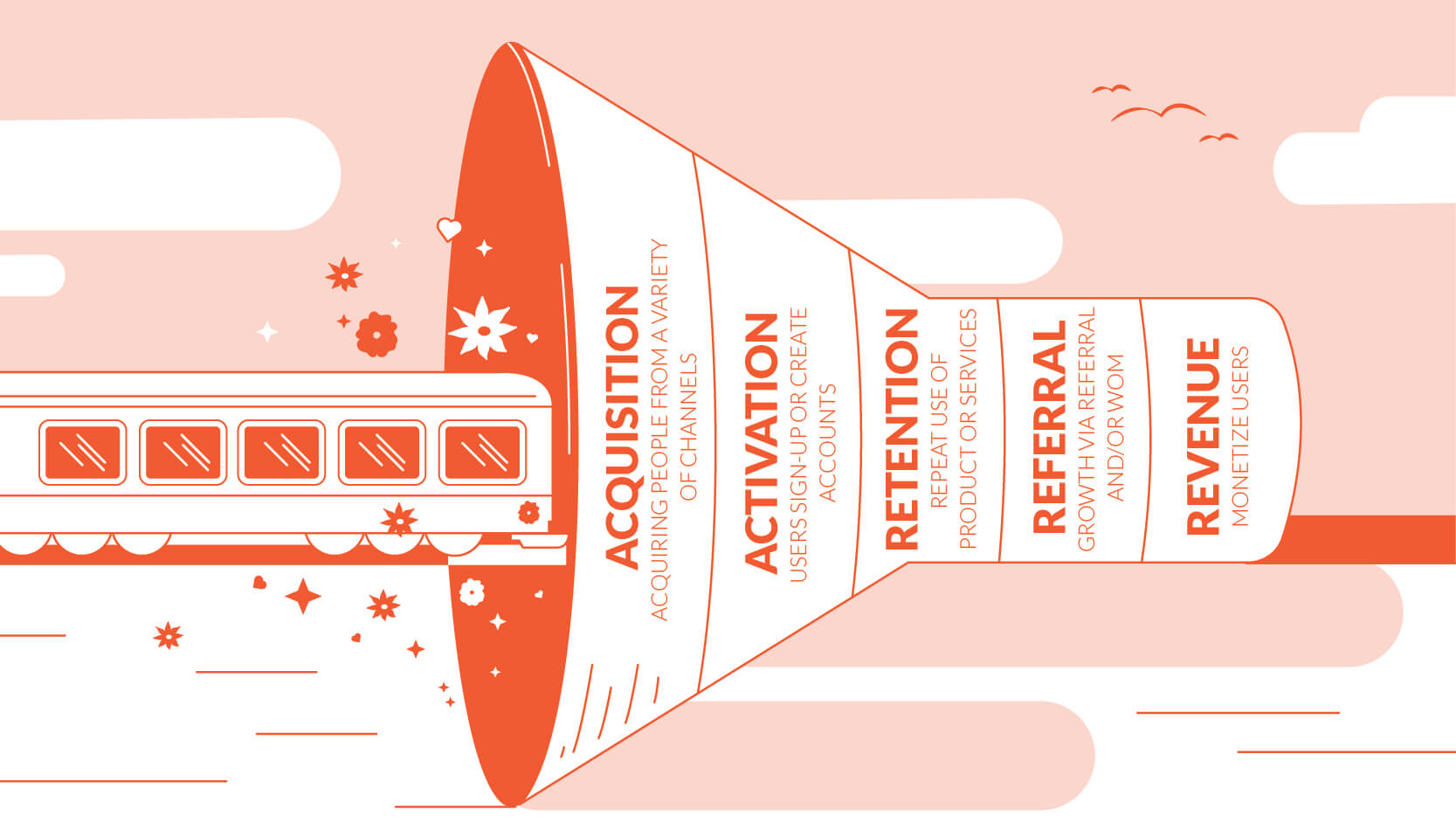Definition of funnel and its components
In this article, you will get familiarized with the Funnel, which you can use to observe your startup level and development well through the specified standards.
One of the most typical and significant issues in startups is the disorder of their creators. Many of them are unsure about the startup growth path and can not remember how much and in what direction they have grown. Whether the current condition is profitable or there is no hope for progress, it is time to turn.
Dave Mcclure, one of the founders of 500 Startups, an active investor, and a triumphant entrepreneur who has worked with many startups, has designed a model called AARRR. According to him, it is essential to focus on these critical metrics. Because if you understand these metrics, you can understand the main problems of your startup.
These funnel metrics are:
1- Acquisition
2- Activation
3- Retention
4- Referral
5- Revenue
1- Acquisition:
It means the process of drawing users to use your product or enter your website through any marketing channel, including organic SEO, content marketing, social media marketing, email marketing, and so on. In the initial phases of a startup, recruitment is the most critical step. There is no problem that your work in this direction will not reach 1000 customers. Move forward and try different channels.
People used to say that it would be better to have 100 people who love your product than to have 1,000 people who are only somewhat interested in your work. Using this concept, you can find your target customers. It is possible that if your product is good, the same consumers will approve of you and talk about you with others. Drawing users can come from all kinds of channels, including Google AdWords, Facebook campaigns, and even going out and talking to people about your product. So be innovative and always be on the test.
2- Activation:
Activation takes place after absorption. The next step is to transform your site visitors into active users. Registering people on your site is just the first step. Many users only create an account once and never come back—people who have been activated and logged in and are using your product.
The main goal at this stage is for people to log in to their account and to understand the value of your product, and imagine how your product can help their work or personal life.
At this point, you can remind people who have never logged in to your account by emailing or calling them about your product and encouraging them to come back. (Note that at this stage, if users do not pay, there is no problem, and you prepare customers for the payment stage)
3- Retention:
The third step is called retrieval, and it is one of the most challenging steps. The whole purpose of returning is to keep your customer satisfied, and your focus is on getting your customer back to you regularly.
There are many strategies for returning. These strategies include creating a referral app, where clients invite their friends to use your product, or constantly updating your app to enable customers to stay around your product. Another great way to increase your bounce rate, which large companies also use, is through email marketing.
Keeping the customer in the circle through social media and email is the key to success. It is imperative to track your rate of return through analytics software.
4- Referral:
The next step is your request. If the user has come up with you so far, you can be happy. Word-of-mouth marketing is an excellent way because it is both accessible and valuable. If your customers know that their friends are also using your product, they will be more interested in it.
Bringing customers to the recommendation stage shows that not only do they like your product, but they also think that their friends can benefit from that value. A good referral program can lead to viral marketing, which will make it easier for your startup to attract customers and brands in the future.
The best recommendation program is like a three-way win, which means that both the startup and the customer and the customer’s friends win. An excellent example of a tripod is the Dropbox recommendation/invitation system. Everyone wants to have more space to store their files and photos, but no one is willing to pay for it. You do not have to pay for this Dropbox method.
All you have to do is invite a friend to Dropbox and get more space in return. It is a three-pronged win, as Dropbox attracts a customer for a small fee, which may be a lifetime. The customer gets some free space, and the invitee wins because they start using an easy-to-use product for Save your data.
5- Revenue:
Earnings are the last and most challenging step for startups. Many large companies have not yet been able to build their payment model. It does not mean that you should not worry about making money. It will be much easier if you have enough data.
You will also better categorize your users and know which revenue model works best for your product and customers. It is the stage at which you should have enough data to understand key points such as Life Time Value, Monthly Recurring Revenue (MRR), and other vital metrics. It is also the point where you need to specify the pricing model for your product.











